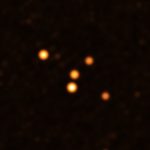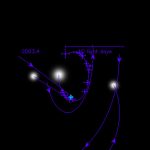How the Event Horizon Telescope observes black holes
Researchers use the Event Horizon Telescope to observe black holes at the centers of galaxies with high resolution.
An article by Anne-Kathrin Baczko, Anton Zensus and Denise Müller-Dum
Nobel laureates Reinhard Genzel (Max Planck Institute for Extraterrestrial Physics in Garching, Germany) and Andrea Ghez (University of California in Los Angeles, USA) had already demonstrated through stellar motions that a black hole resides at the center of the Milky Way. Since May 2022, direct, visual proof of its existence has been available as well, as researchers revealed the first image of the supermassive black hole at the center of our galaxy.
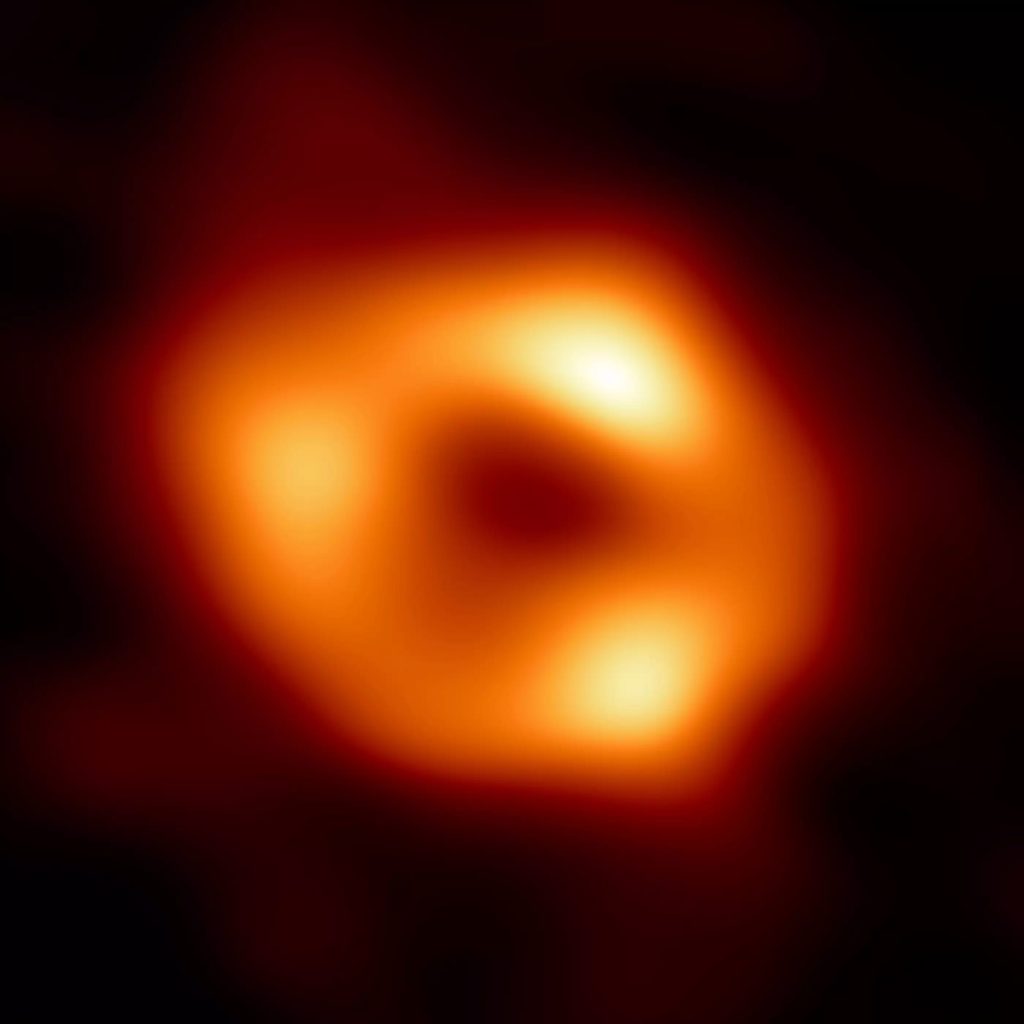
Image of an invisible object
The black hole cannot be imaged directly, because it does not emit light. However, the image shows glowing gas orbiting the black hole at high speed – the so-called accretion disk. This glowing gas emits radio waves that can be observed with ground-based telescopes. The dark region in the center is not, as one might think, the event horizon of the black hole, but its “shadow”: Light is deflected by the gravitational force of the black hole. The smallest possible distance at which it can travel around the black hole without falling in determines the extent of the dark central region in this image.
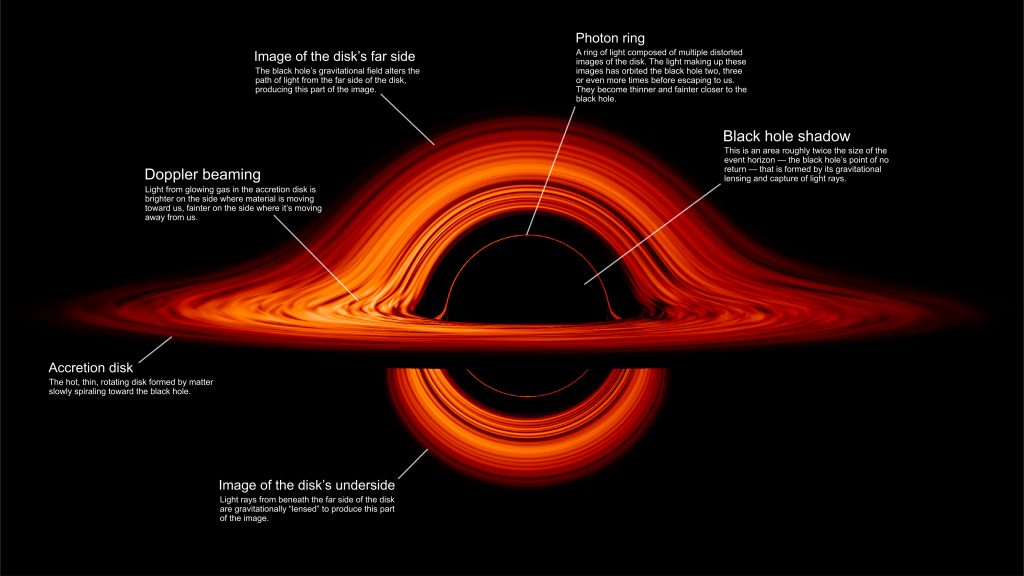
The Event Horizon Telescope
This image was enabled by Very Long Baseline Interferometry (VLBI). With this technique, radio telescopes around the world are combined into a single virtual telescope – the Event Horizon Telescope (EHT). This was necessary, because there are two ways to achieve the highest possible resolution: short wavelength or large telescope size. With a wavelength of 1.3 millimeters, the EHT is already very close to the limit of what is technically possible. The physical size of the construction is also limited, since above a certain diameter it could no longer support its own weight. Thus, the only option to improve the resolution even further is to create a virtual telescope. This is achieved when several telescopes observe the same astronomical source at the same time. Radiation from the source reaches each telescope at slightly different times, which are precisely measured. A supercomputer combines the data streams from the individual telescopes, creating a virtual telescope – in the case of the EHT, one of the size of the Earth. The principle resembles that of optical interferometry, which is used at the VLTI, for example. The EHT thus allows, in principle, to detect an object the size of a ping-pong ball on the Moon.
In 2017, when the image of Sagittarius A* was taken, the following observatories were part of the EHT:
- Atacama Large Millimeter Array (ALMA) in Chile.
- Atacama Pathfinder Experiment (APEX) in Chile
- IRAM 30-m telescope in Pico Veleta, Spain
- James Clark Maxwell Telescope (JCMT) at Maunakea, Hawaii, USA
- Large Millimeter Telescope (LMT) Alfonso Serrano in Mexico
- South Pole Telescope (SPT)
- Submillimeter Array (SMA) on Maunakea, Hawaii, USA
- Submillimeter Telescope (SMT) on Mount Graham in Arizona, USA
Other telescopes have been added since then (as of July 2022):
- 12-m telescope at the University of Arizona on Kitt Peak, AZ, USA.
- Greenland Telescope
- IRAM-NOEMA telescope in the French Alps
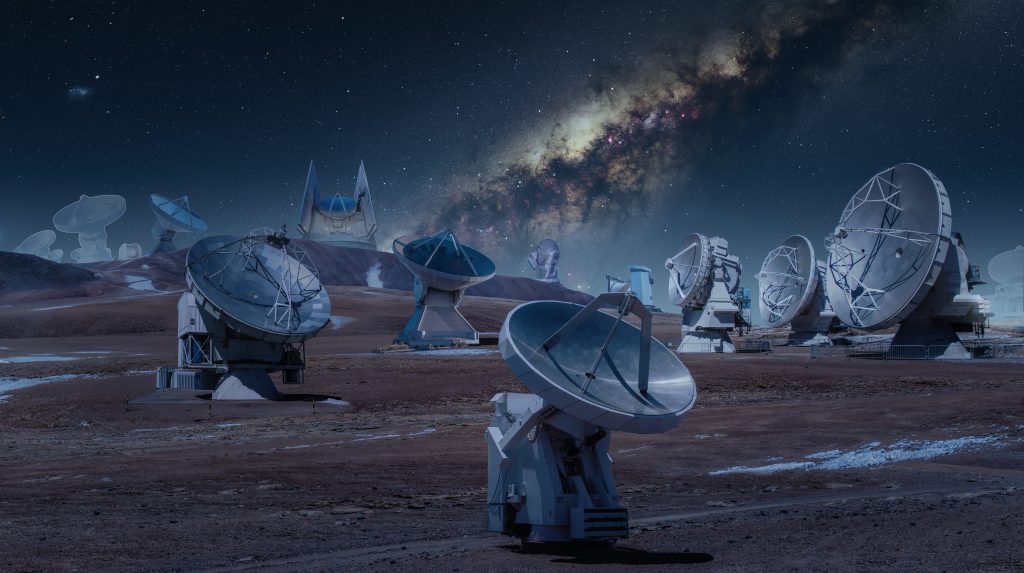
With this telescope network, researchers study active galaxies and the surroundings of black holes at large distances. During the first measurement campaign of the EHT in April 2017, researchers targeted several galaxies, including Virgo A at 53 million light-years from Earth.
From observation to image
Powerful highly-specialized supercomputers – so-called correlators – combine the data from the individual telescopes into a common data set. One of these correlators is located at the Max Planck Institute for Radioastronomy in Bonn. There, about half of the data from the 2017 measurement campaign was correlated. In 2019, the researchers were able to generate an image of M87* at the center of the Virgo A galaxy. This image made headlines in 2019 – it was the first ever direct image of a black hole.
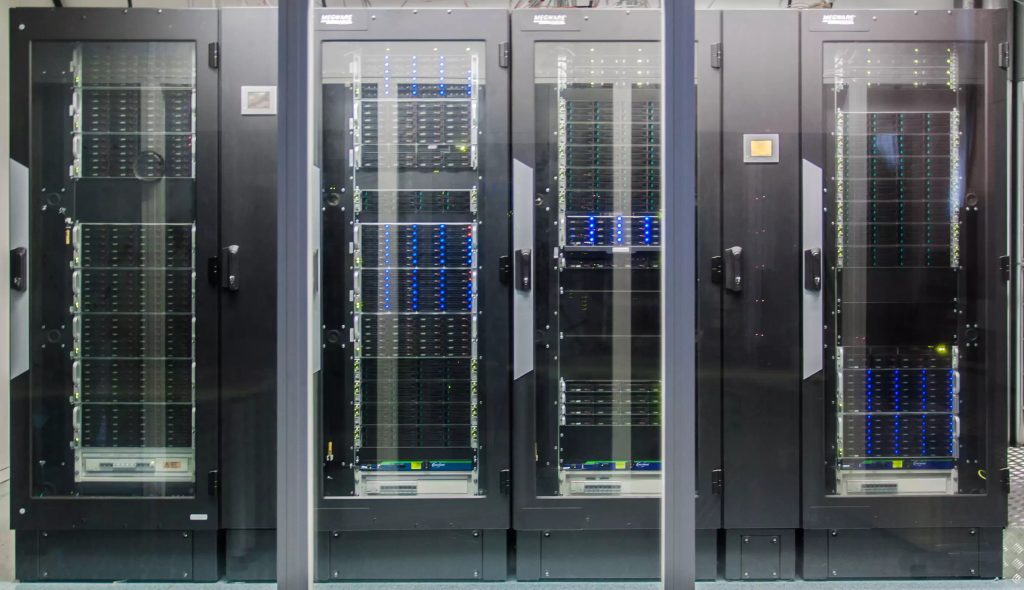
Sagittarius A* was observed for several nights in April 2017 as well. However, data analysis took longer – even though the center of our galaxy is only 27,000 light-years away and thus much closer than M87*. A reason for this was ultimately the difference in size of the two black holes. While the hot gas, which is moving almost at the speed of light, needed several days to weeks to orbit M87*, it took only minutes for the much smaller Sagittarius A*. Thus, the appearance of Sagittarius A* changed very quickly during the observations. However, the precision of the VLBI technique, and ultimately the sensitivity and resolution of the virtual telescope, rely on the relative uniformity of the source’s appearance over a long period of time. In addition, the Earth lies in the galactic plane of the Milky Way, which causes scattering. The researchers thus had to develop new methods to eliminate these and other interfering effects.
In May 2022, the researchers of the EHT collaboration finally released the first image of the black hole in the center of the Milky Way. It represents an average of thousands of images reconstructed from the same correlated data by different scientists using different methods. The ring-shaped structure is strikingly similar to that of M87*, but – as predicted – it is more than a thousand times smaller, corresponding to its lower mass.
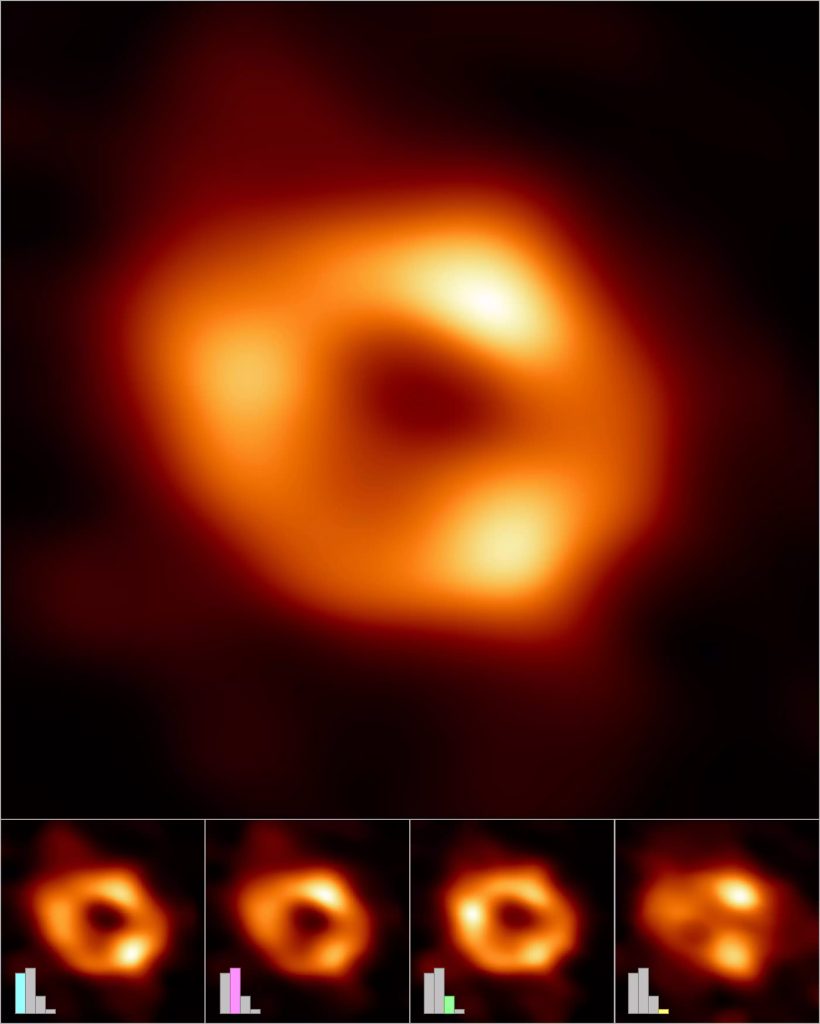
Testing theories
Sagittarius A* had already been thoroughly investigated before it was observed with the EHT. For example, its mass of 4.3 million solar masses and its distance from Earth, which is 27,000 light-years, were known precisely owing to the work of, among others, Nobel laureates Reinhard Genzel and Andrea Ghez. This allowed the researchers to predict the size of the shadow and compare it with the measurements. The result: the measured dimensions agree very well with the predictions of general relativity.
The images will also allow to compare the two black holes Sagittarius A* and M87*. In addition, the data can be used to test how well current theories describe the behavior of gravity and matter in the vicinity of supermassive black holes.
In the meantime, the measurements are being continued: With now eleven observatories, the Event Horizon telescope observed the night sky during a campaign in March 2022.
Further Information
Press release of the Max Planck Institute for Radioastronomy on the image of Sagittarius A*
Press release of the Max Planck Society on the image of Sagittarius A*
Colophon
is an astrophysicist at the Max Planck Institute for Radioastronomy in Bonn, Germany.
is director of the Max Planck Institute for Radio Astronomy in Bonn and head of the research department “Radio Astronomy/VLBI”.
is a trained physicist and geoscientist and works as a science communicator in Bremen, Germany.
Citation
Cite this article as:
Anne-Kathrin Baczko, Anton Zensus and Denise Müller-Dum, “How the Event Horizon Telescope observes black holes” in: Einstein Online Band 14 (2022), 1003



